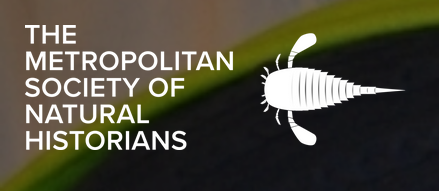On January 26, James Napoli, a Ph.D. student in the Richard Gilder Graduate School and Department of Paleontology of the American Museum of Natural History (AMNH), met with us to discuss recent findings in the world of paleobiology, while showing off the wonderful specimens the AMNH houses in its Dinosaur Halls on the 4th floor. We started in the Hall of Saurischians, in which we learned about theropods, two-legged, meat-eating, three-toed dinosaurs, which included terrifying creatures such as Allosaurus and Tyrannosaurus rex, the king of all Hollywood terror. We started small, though, with a beautifully preserved skeleton of Coelophysis, found at a famous dig site at Ghost Ranch, New Mexico. Coelophysis was an early theropod with recurved flat teeth, which indicate a low bit force, and would kill prey by bleeding them to death.
James pointed out that most dinosaurs are big. Real big! However, during the reign of dinosaurs, oxygen levels were on average lower than they are today (about 16%, compared to 21% in today’s atmosphere). So, the question is, how did they get so big? It is assumed that airsacs, still found in birds, allowed for more effective respiration. Thus, dinosaurs were able to maximize the amount of oxygen available with each breath, which is at least a partial explanation on how they could reach such astonishing sizes, much larger than any mammals at that time. However, an asteroid put an end to nearly all dinosaurs, and increasing oxygen levels allowed large mammals to dominate the scene. Birds, the only surviving lineage of dinosaurs, retained these airsacs, and were able to fly at higher altitudes (= lower oxygen concentrations), which had more oxygen demands due to their locomotion. James also informed us about the various skull openings (and we are not talking about ears, mouth and nose!), including an opening in front of the eye (called the antorbital fenestra), which allowed dinosaurs to retain moisture that they would lose otherwise when breathing.
Next we visited some oscar-winning dinos that probably deserve their own footprints on Hollwyood Boulevard! First was the star of the Jurassic Park movies, T. rex., which like a hyena, ate whole animals, including bones and everything (nothing got wasted here). Next were Deionychus, also seen in Jurassic Park, which scientists believe kicked their lovely legs, only to cut big piercing wounds into their prey, which they would then devour. They? Yes, as most specimens have been found in groups, scientists believe that these cuties were pack hunters.
Sweating, we then moved onto sauropods. James pointed out they possess an expanded ribcage, which was possibly an adaption for digesting the large quantities of plants that these sauropods ate. We also learned that some of the specimens in AMNH were mounted before we understood how their fingers were pointed. Unlike other vertebrates, saurapod fingers are pointed towards each other, as the radia cannot rotate around the ulna (both of which are the two lower arm bones). Sauropods have a famously small head, and their teeth indicate that their jaw was mainly an entry way for food: they probably did not chew, just swallowed (and thus did not follow the common advice to chew before swallowing: in fact, they could not do so!). Instead, a gizzard, an organ in the gut, did the chewing, “down there”.
The last stop was the Hall of Ornithiscians. These dinosaurs are vegetarians and are defined by their special arrangements of hip bones and a predentary bone on their lower mandibles, which was attached to a keratin beak. We started right away with one of the most famous of all, the Stegosaurus. Again, this specimen was mounted a long ago…before paleontologists knew that the spikes should point sideways instead of upwards as they do in this museum specimen. Either way, Stegaosaurus probably defended itself well. The function of the large dorsal triangles found on the back is still unclear. They may have served as a defense mechanism? They may have helped with thermoregulation? Choose your own hypothesis! Either way, the Stegosaurus is not only famous for spikes and triangles, but also for its small brain size. Sorry, not just small: we are talking very small. But is it really size that matters? Researchers pointed out the closest living relatives, birds, also have unusually small brains for their body size. However, birds compensate for this by having a much higher neuron density when compared to mammals. So, maybe Stegosaurus and other relatives were actually smart! After admiring Triceratops, Styracosaurus, and the ubiquitous duck-billed dinosaurs (in fact, given their large size it is unclear how they could be so abundant), we stopped at the cute Psittacosaurus, which reminded some of us of very large guinea pigs. Spontaneous applause erupted: James Napoli described a new species in this group, and he had just started his Ph.D.! We wish him luck and many more dinosaur species on his journey for his Ph.D. and certainly hope he can update us on the many new findings made in the world of dinosaurs.
To view more photos from this event, please visit our gallery. All photo credit goes to Glenn Doherty.
James Napoli is a Ph.D. student at the Richard Gilder Graduate School of the American Museum of Natural History. He grew up in Setauket, New York, and spent his formative years in the halls of the museum where he is now a student. He holds a Bachelor of Science from Brown University in Geology and Biology, and a Master of Science from Stony Brook University in Physiology and Biophysics. His research focuses on the evolutionary biology of vertebrates, especially extinct species like dinosaurs. He is particularly interested in developing new methods to identify species of extinct animals, and in studying the evolutionary importance of individual variation among members of a species.




